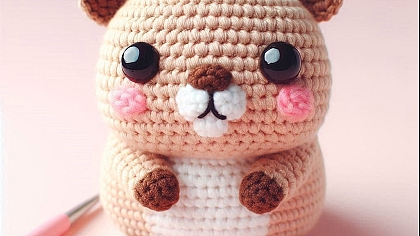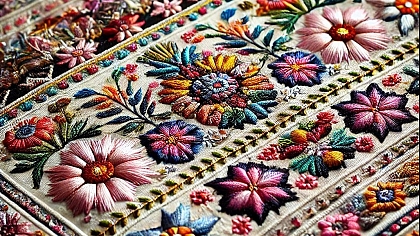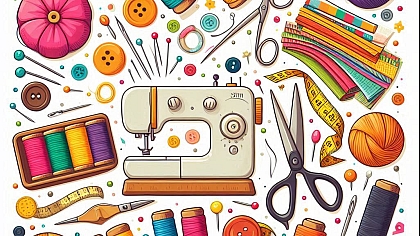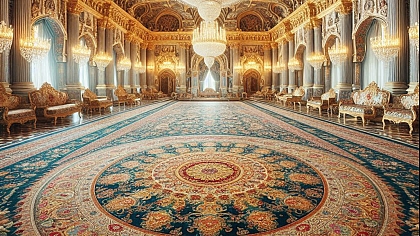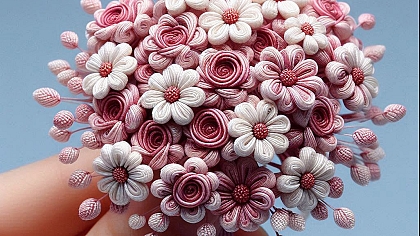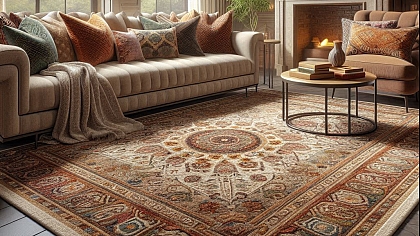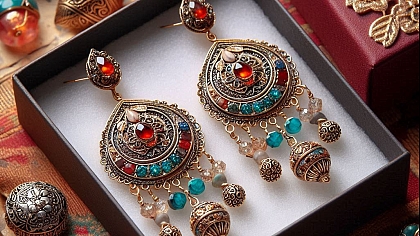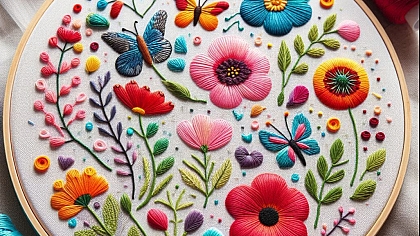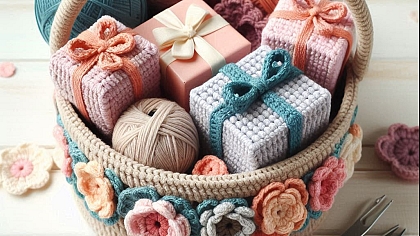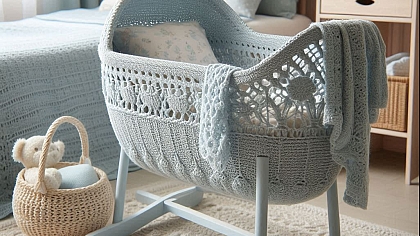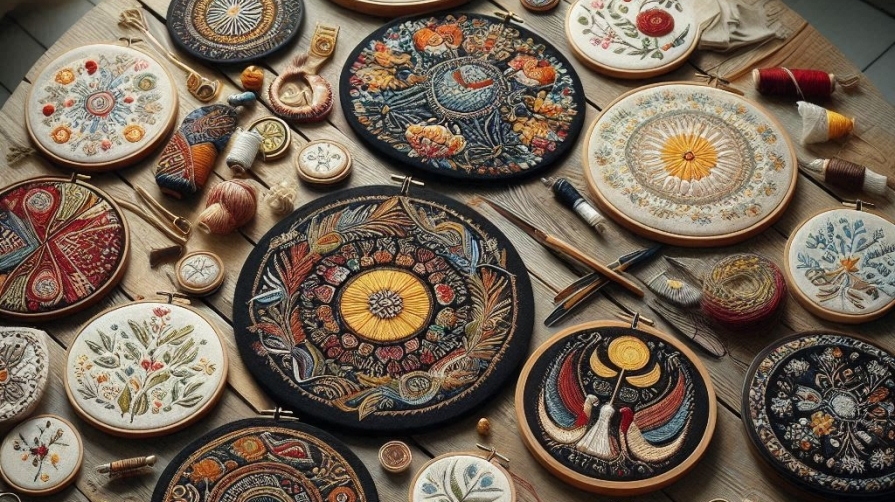
Exploring the World of Hand Embroidery: Styles from Around the Globe
Hand embroidery is an art form that transcends time and geography, weaving together threads of culture, tradition, and creativity. This intricate craft, practiced for centuries across the globe, tells stories through stitches, preserving heritage and celebrating diversity. In this article, we journey through the rich tapestry of hand embroidery styles from different corners of the world, delving into their unique techniques, motifs, and cultural significance.
The Timeless Beauty of Indian Embroidery
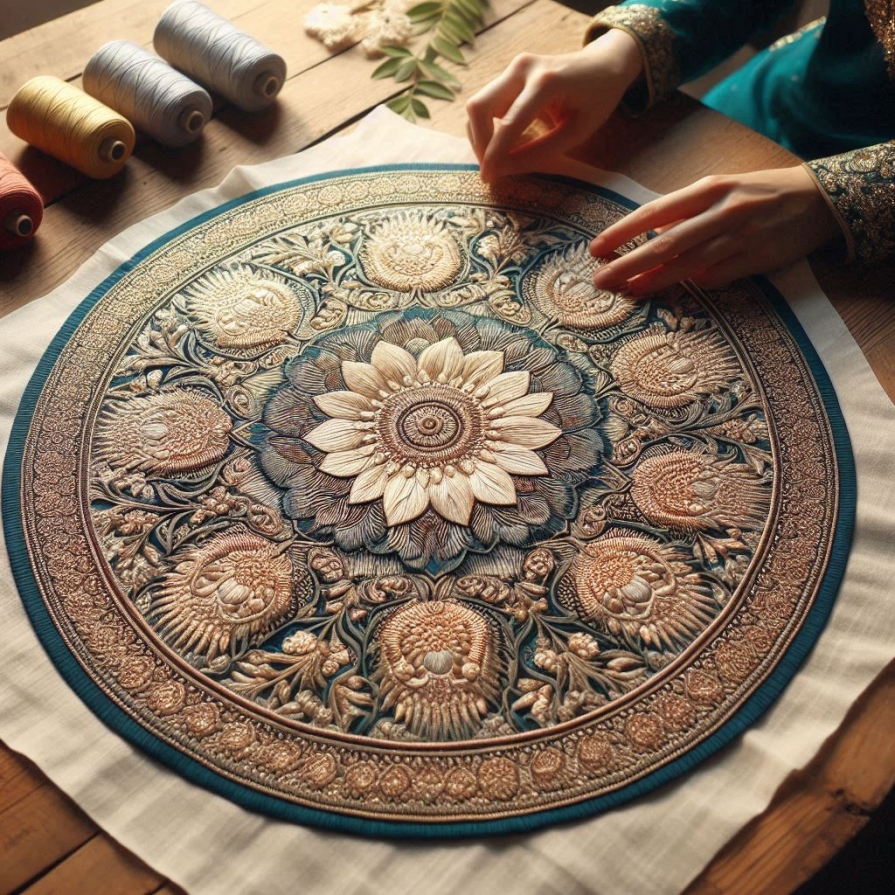
India, with its vast cultural heritage, boasts a myriad of embroidery styles, each reflecting the diverse traditions of its regions. One of the most renowned forms is Zardozi, which dates back to the Mughal era. Zardozi embroidery involves the use of gold and silver threads to create intricate patterns on luxurious fabrics like silk and velvet. Historically, this opulent embroidery adorned royal garments, ceremonial outfits, and even ornate tapestries.
Another prominent Indian embroidery style is Phulkari, originating from Punjab. Phulkari, meaning "flower work," is characterized by its vibrant floral patterns embroidered with silk threads on cotton or khadi fabric. Traditionally, women created Phulkari to celebrate life events such as weddings and births, each piece reflecting personal stories and emotions.
In contrast to the bold colors of Phulkari, the delicate Chikankari embroidery of Lucknow is known for its subtle elegance. Chikankari uses white thread on lightweight fabrics like muslin to produce intricate floral and paisley motifs. This embroidery technique, believed to be introduced by the Mughal empress Nur Jahan, requires immense skill and precision, resulting in ethereal, lace-like designs.
The Elegance of Japanese Embroidery
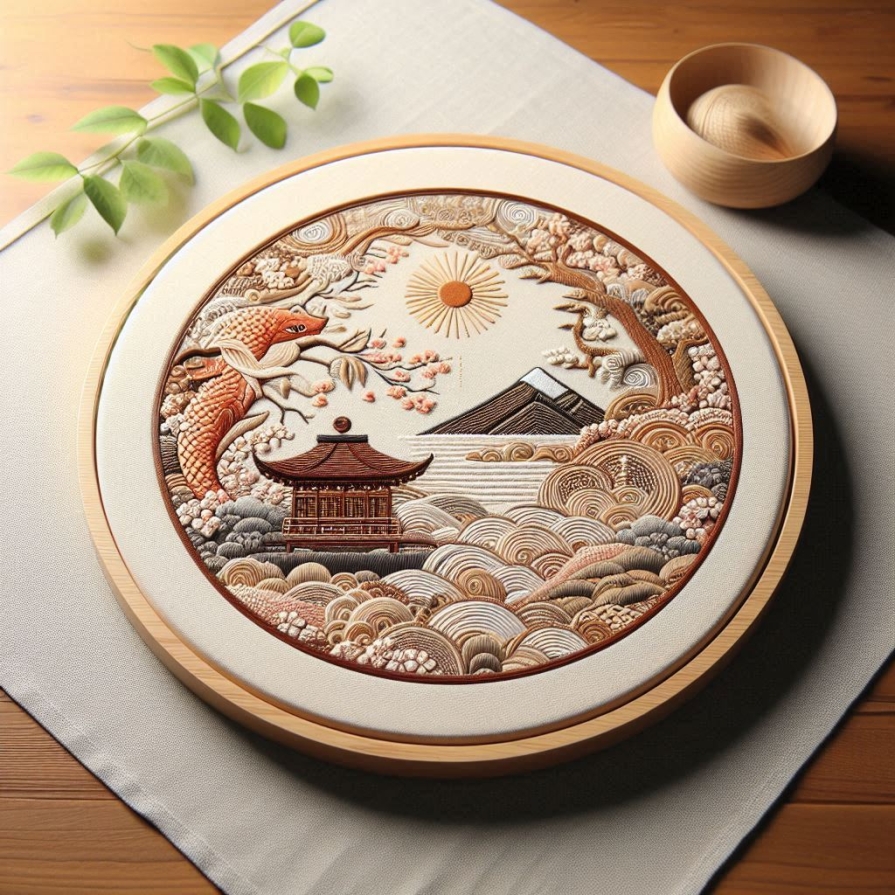
Japanese embroidery, or Nihon Shishu, is an exquisite art form that embodies the principles of beauty, simplicity, and nature. One of the most distinctive styles is Sashiko, which originated as a practical technique to reinforce and mend fabric. Sashiko uses simple running stitches to create geometric patterns, often in white thread on indigo fabric. Over time, this utilitarian craft evolved into a decorative art, with patterns symbolizing good fortune, longevity, and protection.
Another remarkable Japanese embroidery style is Kogin, a form of counted thread work from the Tsugaru region. Kogin involves stitching geometric patterns onto a base fabric, traditionally using indigo-dyed hemp. The motifs, inspired by nature and daily life, are meticulously counted and embroidered to create harmonious, repetitive designs.
Bunka Shishu is a modern Japanese embroidery technique that resembles painting with thread. Using rayon thread and a specialized punch needle, Bunka Shishu creates highly detailed and realistic images, from landscapes to portraits. This style, introduced in the early 20th century, showcases the Japanese appreciation for precision and artistry.
The Rich Heritage of Mexican Embroidery
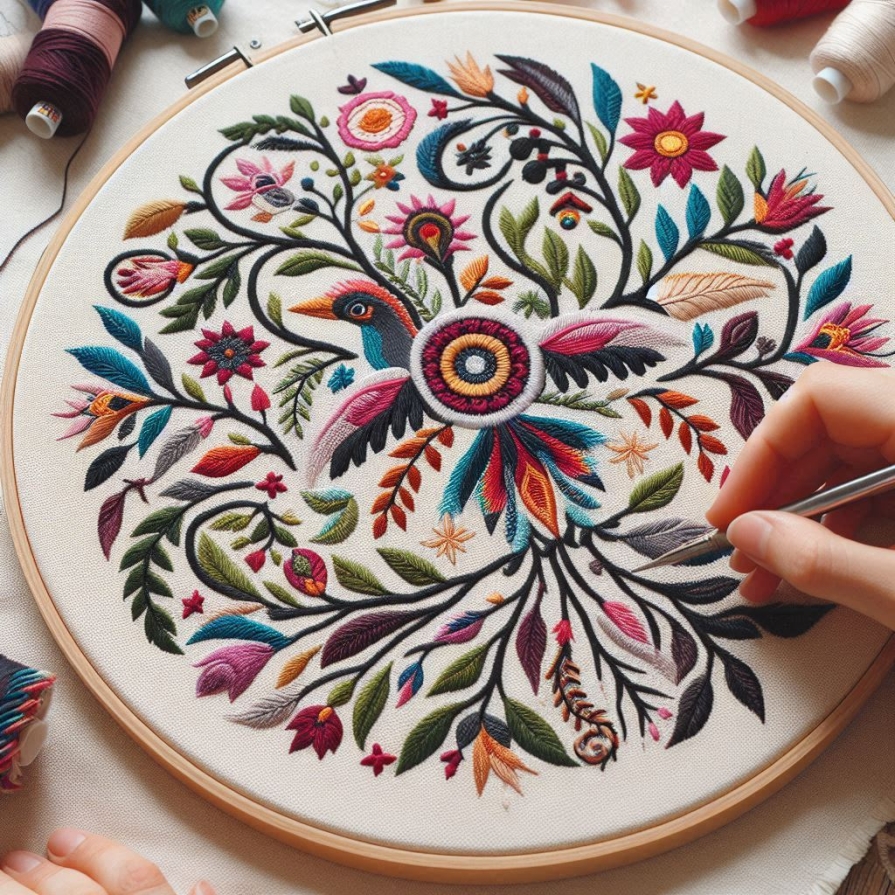
Mexican embroidery is a vibrant expression of the country's rich cultural heritage and indigenous traditions. One of the most iconic styles is Otomi embroidery, originating from the Otomi people of the central Mexican highlands. Otomi embroidery features bold, colorful designs depicting animals, plants, and everyday scenes, often on white or neutral backgrounds. Each piece is unique, reflecting the individual creativity and cultural symbols of the artisan.
Another distinctive Mexican embroidery style is Tenango, which also hails from the Otomi region. Tenango embroidery is characterized by its intricate, whimsical designs that tell stories of the community and its surroundings. These vibrant motifs, stitched in a variety of bright colors, are often used to decorate textiles like tablecloths, wall hangings, and clothing.
Tehuantepec embroidery from the Isthmus of Tehuantepec is known for its elaborate floral designs, typically embroidered on the traditional huipil, a loose-fitting tunic. This style uses satin stitch to create dense, vibrant patterns that celebrate the natural beauty of the region. The colorful, bold designs of Tehuantepec embroidery are a testament to the resilience and creativity of the indigenous Zapotec women who have preserved this art form for generations.
The Intricacy of Chinese Embroidery
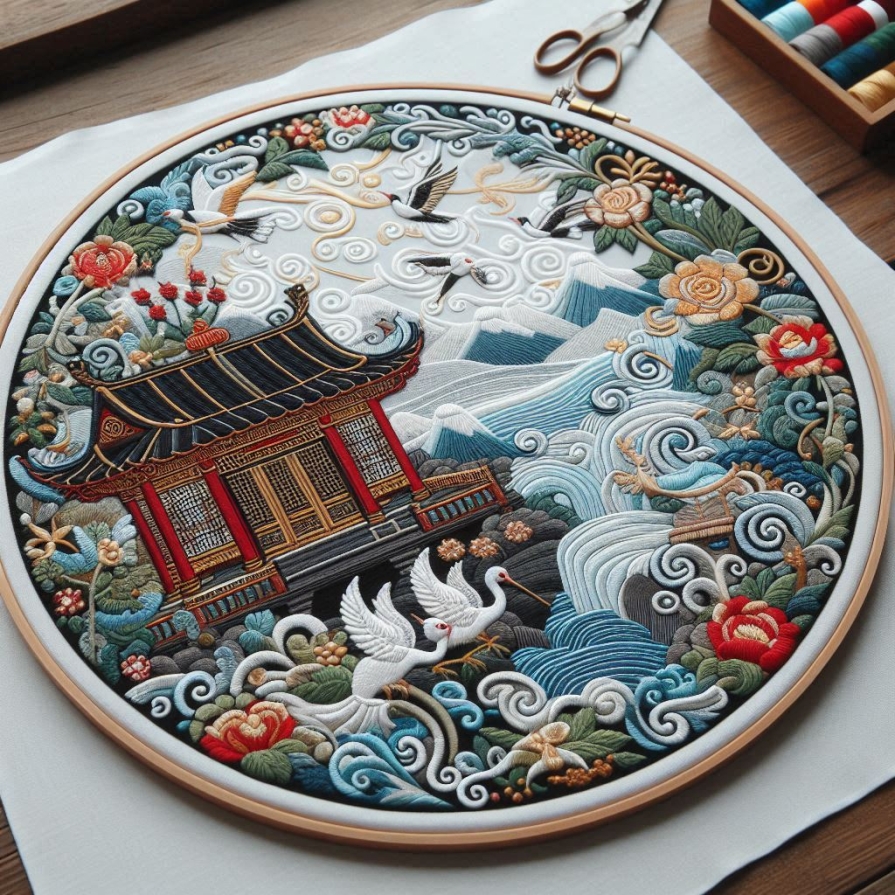
China has a long and illustrious history of embroidery, with each region boasting its own distinctive style. Suzhou embroidery, or Su Xiu, is one of the most famous and refined forms. Originating from Suzhou in Jiangsu province, Su Xiu is known for its delicate, lifelike images created with silk threads. This style employs over 40 different stitching techniques to achieve incredible detail and realism, often depicting nature scenes, animals, and classical Chinese motifs.
Another renowned Chinese embroidery style is Hunan embroidery, or Xiang Xiu, from Hunan province. Xiang Xiu is celebrated for its bold and vivid colors, often depicting tigers, birds, and flowers. The stitches used in Xiang Xiu create a textured, almost three-dimensional effect, adding depth and movement to the designs.
Guangdong embroidery, or Yue Xiu, from Guangdong province, is known for its intricate, high-relief embroidery often featuring dragons, phoenixes, and other traditional symbols. This style uses a variety of materials, including silk, gold, and silver threads, to create opulent, eye-catching designs.
The Artistic Flair of Russian Embroidery
Russian embroidery, with its roots in ancient Slavic traditions, is a rich and colorful art form that reflects the country’s folklore and history. Vyshyvanka is a traditional Ukrainian and Russian embroidery style typically used to decorate clothing such as shirts and blouses. Vyshyvanka features geometric and floral patterns, often stitched in red and black threads, symbolizing protection and fertility. Each region has its own distinct motifs and color combinations, making every piece a unique expression of local heritage.
Another prominent Russian embroidery style is Olonets embroidery from the Karelia region. This style is known for its vibrant, multi-colored geometric patterns, often stitched on household linens and traditional garments. Olonets embroidery uses a variety of stitches to create intricate, textured designs that reflect the natural beauty and cultural heritage of the region.
The Traditional Charm of Eastern European Embroidery
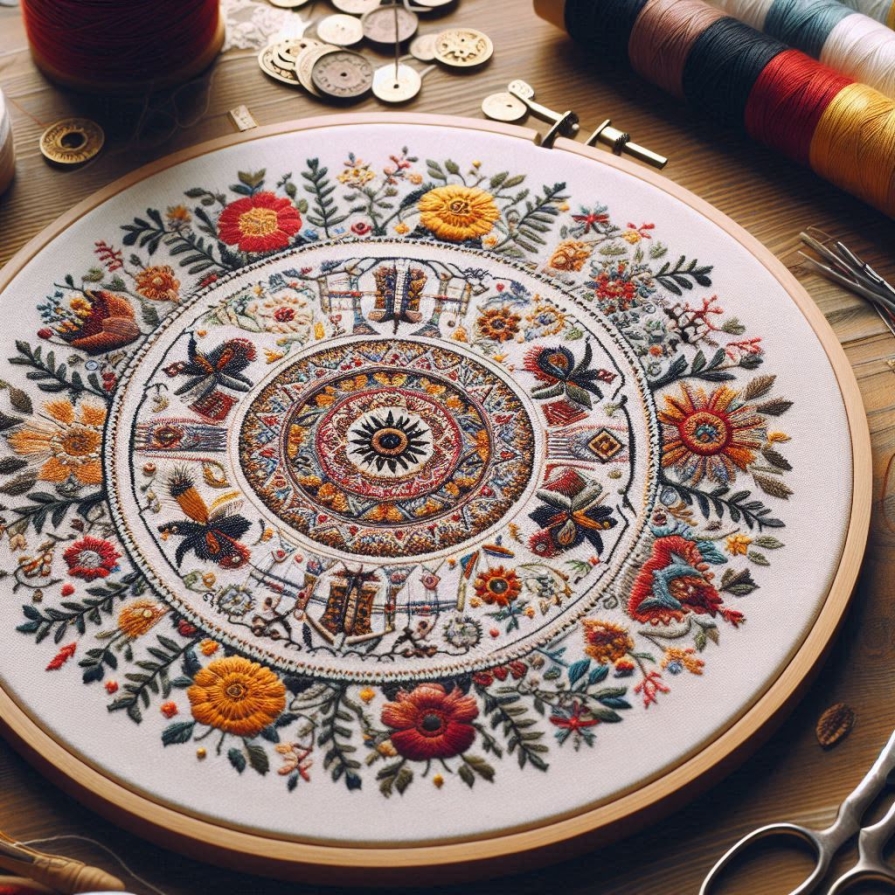
Eastern Europe boasts a rich tradition of embroidery, with each country and region offering its own unique styles and techniques. Hungarian embroidery, for example, is renowned for its vibrant floral motifs and colorful designs. One of the most famous Hungarian styles is Matyó embroidery from the Matyóföld region. Matyó embroidery features bold, stylized floral patterns, often in red, blue, and green, stitched on black or white fabric. This style is used to decorate traditional garments, tablecloths, and other textiles, reflecting the lively spirit of Hungarian folk art.
In contrast, Romanian embroidery is known for its intricate, delicate designs often featuring geometric and floral motifs. One of the most famous Romanian styles is Hora de la Prislop, which uses fine, precise stitches to create detailed patterns on lightweight fabrics like linen and cotton. This style, traditionally used to embellish blouses, dresses, and household linens, showcases the Romanian appreciation for craftsmanship and beauty.
Polish embroidery, with its bold colors and striking patterns, is another remarkable Eastern European tradition. Kashubian embroidery, from the Kashubia region, is particularly renowned for its distinctive blue and white designs. This style uses a variety of stitches to create intricate floral and geometric patterns, often inspired by the natural beauty of the Kashubian landscape.
The Cultural Significance of African Embroidery
African embroidery is a vibrant and diverse art form that reflects the rich cultural heritage of the continent. Moroccan embroidery, for example, is known for its intricate geometric patterns and vibrant colors. One of the most famous Moroccan styles is Fassi embroidery from the city of Fez. Fassi embroidery features elaborate, symmetrical designs often stitched with silk or metallic threads on fine fabrics like silk and linen. This style is traditionally used to decorate garments, household linens, and ceremonial textiles.
In West Africa, Ghanaian embroidery is renowned for its bold, colorful designs and symbolic motifs. Kente cloth, although primarily woven, often features embroidered elements that enhance its intricate patterns. Kente cloth is traditionally made from silk and cotton, with each design and color carrying specific cultural meanings. The embroidered elements add texture and depth to the already vibrant patterns, making each piece a unique work of art.
Ethiopian embroidery, with its distinctive cross-stitch patterns and bold colors, is another remarkable African tradition. This style often features geometric and floral motifs, embroidered on lightweight fabrics like cotton and linen. Ethiopian embroidery is traditionally used to decorate garments, religious textiles, and household linens, reflecting the country’s rich cultural and religious heritage.
The Sophistication of European Embroidery
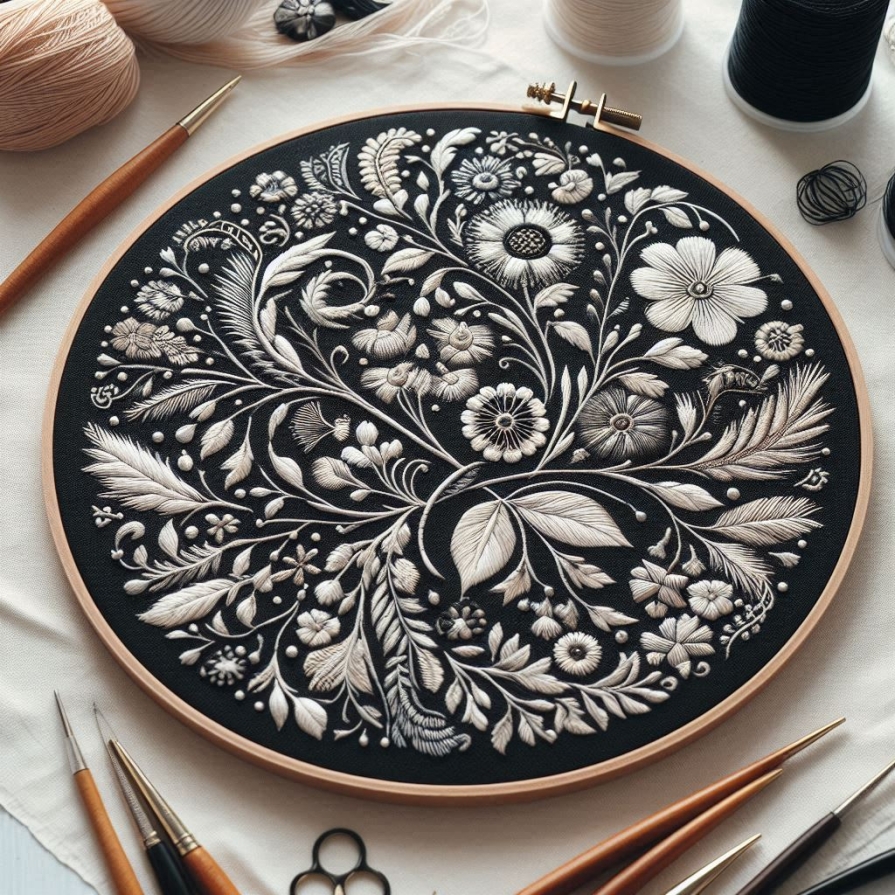
Europe has a long and storied history of embroidery, with each country offering its own unique styles and techniques. English embroidery, for example, is known for its refined, delicate designs. Blackwork embroidery, which originated in Tudor England, features intricate geometric patterns stitched in black thread on white or light-colored fabric. This style, traditionally used to decorate garments and household linens, showcases the English appreciation for detail and craftsmanship.
French embroidery, with its sophisticated, elegant designs, is another renowned European tradition. Boutis embroidery, from the Provence region, is particularly famous for its raised, quilted patterns. This style uses fine, precise stitches to create intricate, textured designs often featuring floral and geometric motifs. Boutis embroidery is traditionally used to decorate garments, household linens, and decorative textiles, reflecting the French appreciation for beauty and artistry.
Italian embroidery, with its bold, vibrant designs, is another remarkable European tradition. Reticella embroidery, which originated in the Renaissance, features intricate lace-like patterns created by cutting and pulling threads from the base fabric. This style is traditionally used to decorate garments, household linens, and decorative textiles, showcasing the Italian appreciation for detail and craftsmanship.
The Revival and Modern
In recent years, there has been a revival of interest in hand embroidery, with contemporary artists and designers reimagining traditional techniques and styles for the modern world. This resurgence is not only preserving the cultural heritage of embroidery but also pushing the boundaries of what this art form can achieve.
Contemporary embroiderers are experimenting with new materials, techniques, and designs, creating innovative works that blend tradition and modernity. Artists like Sarah K. Benning and Danielle Clough are gaining recognition for their unique, modern takes on traditional embroidery, using bold colors, unconventional materials, and contemporary motifs to create stunning works of art.
This modern revival is also being fueled by the rise of social media and online communities, where embroiderers from around the world can share their work, techniques, and inspiration. Platforms like Instagram and Pinterest have become vibrant hubs for the embroidery community, fostering a global exchange of ideas and encouraging the growth of this timeless craft.
The Enduring Appeal of Hand Embroidery
Hand embroidery, with its rich history and diverse styles, is a testament to the creativity, skill, and cultural heritage of artisans around the world. From the opulent Zardozi of India to the delicate Chikankari of Lucknow, the vibrant Otomi embroidery of Mexico to the intricate Suzhou embroidery of China, each style tells a unique story, reflecting the traditions and values of its region.
As we continue to explore and celebrate the world of hand embroidery, we not only preserve these beautiful traditions but also inspire future generations of artisans to keep this timeless craft alive. Whether practiced as a form of artistic expression, a means of preserving cultural heritage, or simply a meditative pastime, hand embroidery remains a powerful and enduring art form that connects us to the past and weaves a thread of creativity and beauty into the fabric of our lives.

